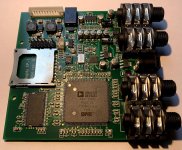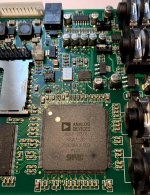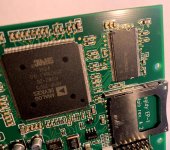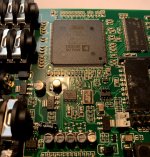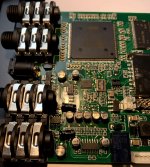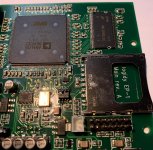In this post: https://www.diyaudio.com/forums/mul...-15-dual-8-tpl-150-ibwwmtm-4.html#post6046348
I noticed, that Logidy EPSi was used. It is a stereo convolver with low latency, I bought one for guitar cab simulation and it never got used too much since the other guitarist did not want to use cab simulation at all🙂
Anyway, I have that piece of hardware and it can do stereo convolution with an IR wav 24 bit stereo with maximum of 65535 samples. I wonder if I could try to do DRC and/or phase linearization with this device - I think I can, if I am able to get the IR wav I need...any thoughts on that?
I noticed, that Logidy EPSi was used. It is a stereo convolver with low latency, I bought one for guitar cab simulation and it never got used too much since the other guitarist did not want to use cab simulation at all🙂
Anyway, I have that piece of hardware and it can do stereo convolution with an IR wav 24 bit stereo with maximum of 65535 samples. I wonder if I could try to do DRC and/or phase linearization with this device - I think I can, if I am able to get the IR wav I need...any thoughts on that?
A problem with using a digital guitar pedal for hifi audio is that the data converters (ADC/DAC) inside it are very unlikely to be well suited to hifi.
Have you opened it up to see what chips and clocks are inside? Any good, in-focus, high-res pics of the board you can post?
Have you opened it up to see what chips and clocks are inside? Any good, in-focus, high-res pics of the board you can post?
This pedal was primarily developed as a high end reverb device. The specs look OK. logidy.com I will try to take it apart and make some pics.
This device really interests me. Also, I wonder, why it's not being made any more or why no one else seems to have picked up the idea? Was the UI too basic? Seemed to excite a number of people at the time.
Any progress with the pics @pelanj? - it's been a while I know...
Any progress with the pics @pelanj? - it's been a while I know...
It was one of the first devices for cabinet simulation. There are quite some available now. For guitar it is perfect, it had it tested by a studio guy and he was very happy with it buying his own after that.
I kind of shifted the project lower down on the priority list, I need to finish the speakers to be corrected first🙂
I kind of shifted the project lower down on the priority list, I need to finish the speakers to be corrected first🙂
Hey. Please, please move forward with this. Here's why:
The Logidy EPSI is, to this date, the only stompbox capable of hosting IR reverbs. It's also no longer available. No one else has made one.
Many on the used market are being hogged by people wasting them as guitar speaker cabinet IR loaders - despite dozens of those existing (none of which can host IRs long enough for reverbs).
This is insanely frustrating. There are a host of new algorithmic reverb stompboxes out there - many cost more than the EPSI did, and all of them sound worse.
I have to assume that the EPSI being the only example is for one of two reasons - or a combination:
1. Managing to work convolution reverb on big, long IRs in a stompbox like the EPSI did required some genius hack that no one else has managed to figure.
2. Guitar players are too tech-illiterate to know about the advantages of reverb IR over algorithmic reverb.
If 2, things will eventually change, as even guitar players managed to work out that cabinet IRs sounded better than other kinds of speaker emulation.
If 1, opening the EPSI up and seeing what it uses may provide some insights.
The Logidy EPSI is, to this date, the only stompbox capable of hosting IR reverbs. It's also no longer available. No one else has made one.
Many on the used market are being hogged by people wasting them as guitar speaker cabinet IR loaders - despite dozens of those existing (none of which can host IRs long enough for reverbs).
This is insanely frustrating. There are a host of new algorithmic reverb stompboxes out there - many cost more than the EPSI did, and all of them sound worse.
I have to assume that the EPSI being the only example is for one of two reasons - or a combination:
1. Managing to work convolution reverb on big, long IRs in a stompbox like the EPSI did required some genius hack that no one else has managed to figure.
2. Guitar players are too tech-illiterate to know about the advantages of reverb IR over algorithmic reverb.
If 2, things will eventually change, as even guitar players managed to work out that cabinet IRs sounded better than other kinds of speaker emulation.
If 1, opening the EPSI up and seeing what it uses may provide some insights.
Here are some pictures of mine. I hope you can see something there. I can recognize only the DSP and maybe some opamps🙂
Attachments
- Home
- Source & Line
- Digital Line Level
- Logidy EPSi stereo convolver
